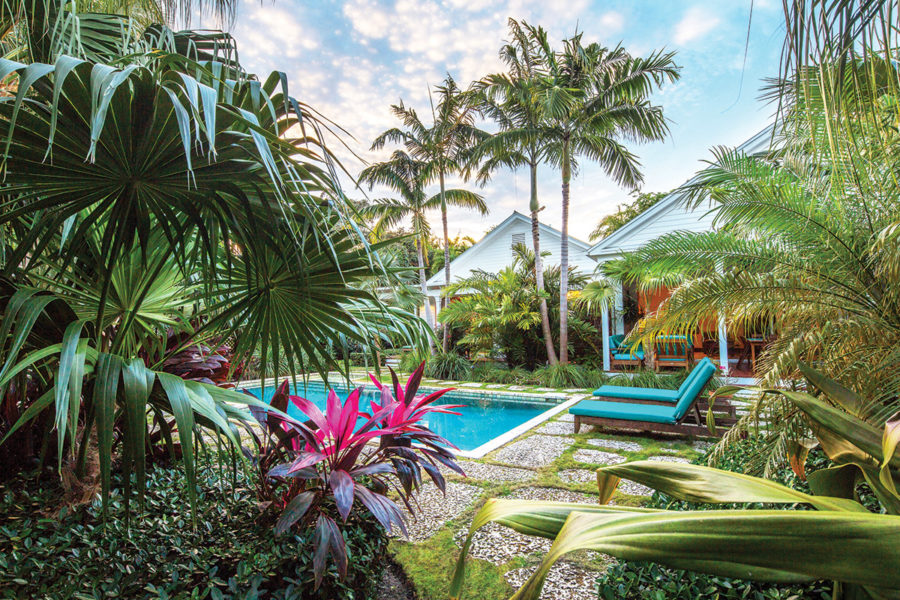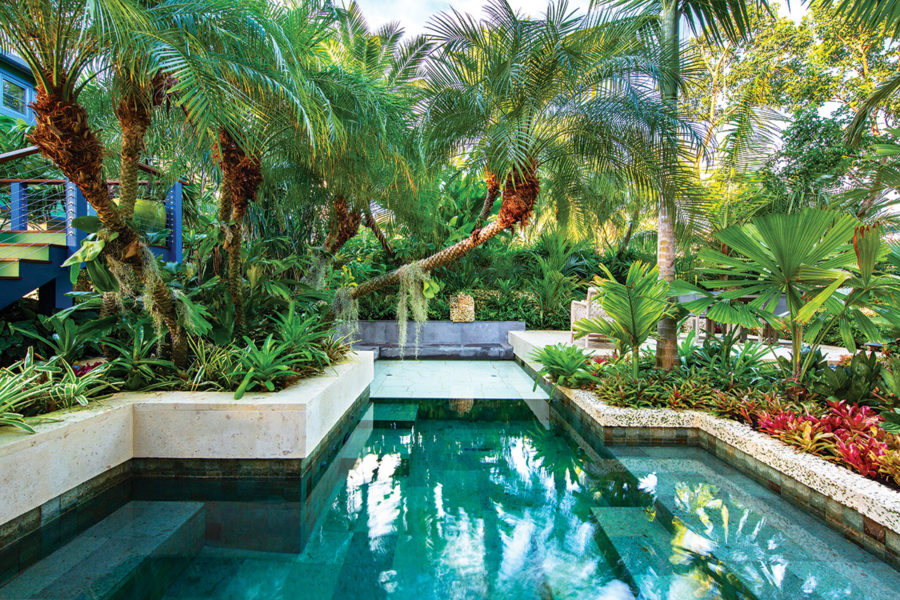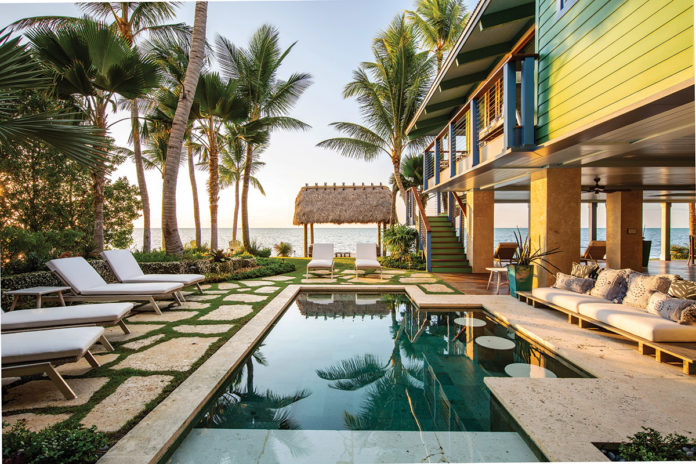If design work is largely about solving problems, good design is about solving them in such a way that you forget what the original problems were in the first place.
Arguably it’s why stepping onto a Craig Reynolds-designed property — with all the green and the shade, all the flowing lines and the sense of privacy, and all the regionally appropriate hardscape — can give you a slight sense of amnesia. You don’t know why the place looks the way it does, but it works. Really, really well.
“That’s what we market – design. We always talk about doing the best design, no matter what, for every project we can come up with. It is number one every time,” Reynolds said.
Reynolds moved to the Keys in 1998 with a masters degree in landscape architecture from the University of Florida and a job working for the aptly named Raymond Jungles.
“He was one of the first guys to make residential [landscape] design sexy, because it was all commercial before that – shopping malls and developments. Raymond was one of the first to start looking at it as an art form,” said Reynolds. “He showed you what could be done if you hire a landscape architect.”

Reynolds stayed with Jungles for seven years, learning the ways of South Florida’s flora, contractors and clients, before getting an office and hanging out his own shingle. I was friends with him then. Going out on your own is always a big risk, and the first six months seemed kind of rocky (though Craig is not the kind of guy to complain). But then something seemed to catch, and Craig Reynolds Landscape Architects has been thriving ever since.
Most of his work is in Key West and the Florida Keys, but he has done significant projects on the Florida mainland, as well as in Louisiana, Jamaica, the Bahamas, Curaçao and St. Vincent. Clients have included Ralph Lauren and Red Sox outfielder and designated hitter J.D. Martinez.
Currently he works out of a second-story office on Duval Street with a ping pong table for a conference table, a staff of two landscape architects and an office manager. Reynolds says they have about 25 jobs in the hopper at a time, all in various stages – either in design, permitting or under construction. Jobs usually take a year-and-a-half to two years from start to finish, though he says right now he’s telling clients it will be close to a year before he can even start a new project.
He keeps waiting for the work to slow down, but it doesn’t. He said that in an average year the office used to get about 40 to 50 calls from potential clients, but with COVID limiting people’s travel, in 2021 they received over 180 inquiries.





Photos by Tamara Alvarez
“I would say we’ve had a pretty good track record of meeting the design criteria that the owners want. I think that’s because at the beginning we listen to them. A lot. We take notes about what they want. We walk the site with them. I always tell them to give me pictures or ideas of anything that appeals to them at all. And then we do the design.”
Reynolds has worked hard to not have his schedule subsumed with the vagaries and inevitable emergencies that come with running a business. His design time, if not sacred, is sacrosanct. He blocks out Tuesdays and Thursdays, and Wednesday afternoons when he can get away with it, to wrestle with vexing problems that come with creating a new landscape. He spends hours sketching things out on tracing paper, overlaying layouts and ideas and concepts, making sure modernity and fluidity merge with function in as organic a manner as possible. He thinks about it when he’s riding his bike in the early-morning hours, or reading in the bathtub after work, or flying solo cross country in his single-engined Cirrus SR-22.
“I have a thing I call simple/complex/simple. You start out with a simple idea. You’re like, ‘Oh yeah, I know exactly what I’m gonna do.’ And then as you start designing, it becomes really complicated and complex. You’re like, ‘Oh, what if I added this and added that?’ And then you have to just step back, and you have to say, ‘OK, now I need to start peeling elements out of this because I just went overboard.’ Then I bring it back to simple again.”

Part of that process is designing for the arc of time, knowing how plantings will look and function immediately after construction, and how they will look and function in two years, five years, 10 years.
Visiting a nearly completed project on Sugarloaf Key, Reynolds pointed out the row of sabal palmettos lining the circular driveway, mature trees selected for their elegantly curving trunks that provided a sense of privacy and permanence. The finished area under the house, a resort-like living space, was planted with elements such as lady palms and Florida silver palms, trees that don’t require much sunlight and won’t grow much more than they already have.
Reynolds said they try to use Keys natives, such as saw palmettos, as often as possible, especially in open areas, or areas near the water, because they can handle the sun and the salt of the environment. But he said they also utilize a number of Caribbean natives, too, such as old-man palms from Cuba, because they require very little by way of irrigation.
On the Sugarloaf property a set of stone stairs built with small slabs of surprisingly grippy Miami oolite led from a modest beach area down into the water. The beach worked as a casual counterpoint to all the forms and structures of the property, but Reynolds pointed out that it also serves another purpose – the sand beneath functioned as a retention area to store and filter rainwater from the roof and other areas of the property.
“In the end we want a property to feel like it’s always been there, like it’s supposed to be there, like it fits. Like it wasn’t designed at all,” Reynolds said.



















